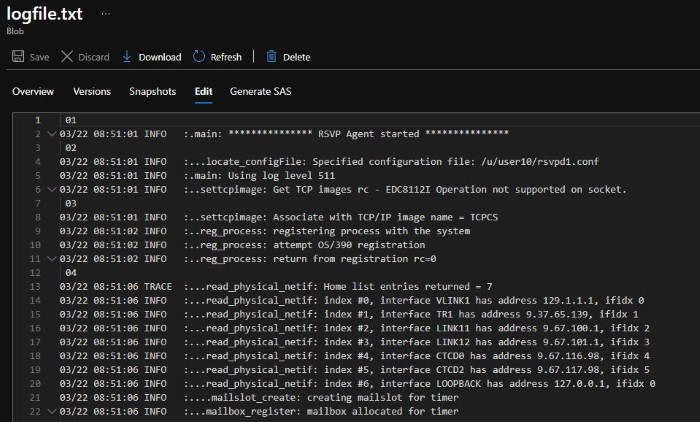Storage Account
REST API
More details on the REST API:
- SAS Token: https://docs.microsoft.com/en-us/rest/api/storageservices/authorize-with-shared-key
- Get BLOB: https://docs.microsoft.com/en-us/rest/api/storageservices/get-blob
- Set BLOB Properties: https://docs.microsoft.com/en-us/rest/api/storageservices/set-blob-properties
- Call REST API Auth: https://docs.microsoft.com/en-us/azure/storage/common/storage-rest-api-auth
Powershell
Example how to upload a file to a BLOB storage container using SAS token authentication:
function UploadToBLOB ($file, $storage, $container, $sastoken) {
$filename = (Get-Item $file).Name
$uri = https://$($storage).blob.core.windows.net/$($container)/$($filename)$($sastoken)
$headers = @{
'x-ms-blob-type' = 'BlockBlob'
}
Invoke-RestMethod -Uri $uri -Method Put -Headers $headers -InFile $file
}
UploadToBLOB "D:\file\path\file.txt" "storage-account-name" "container-name" "SAS-token"
Postman
GET
Running GET with Postman for a given BLOB storage container using SAS token authentication:
Create a SAS token for the Azure storage account you want to use:
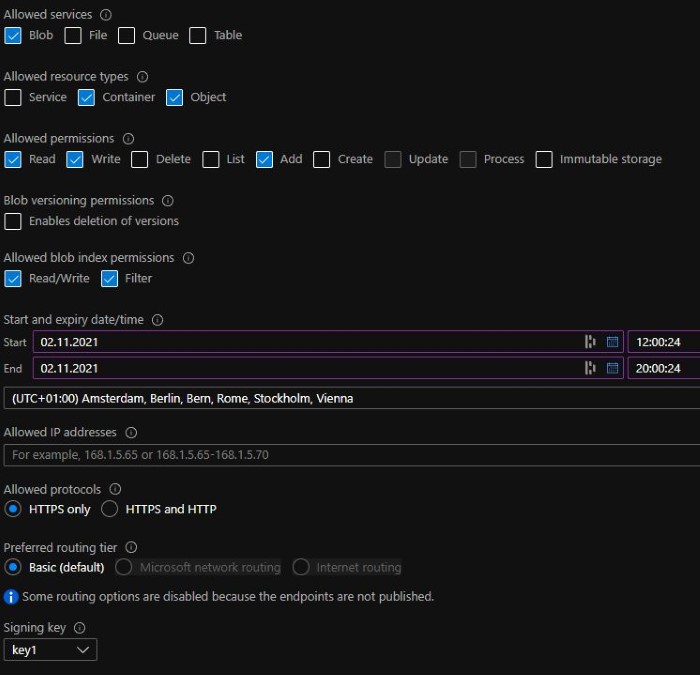
Use this SAS token in the postman GET request and postman will automatically show you the parameters of the SAS token:
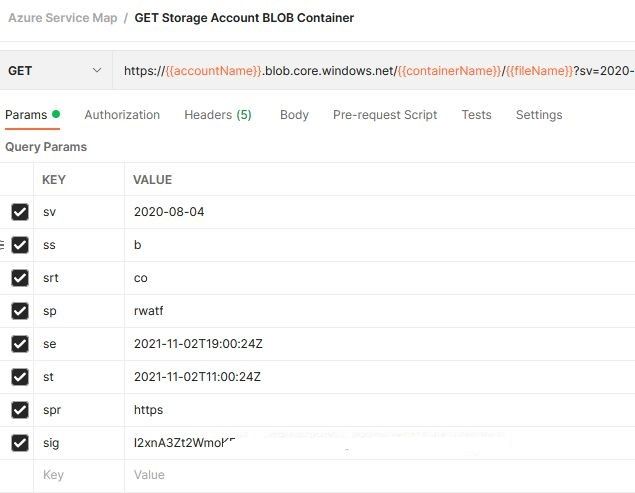
I modified the GET request a little bit to use environment variables for storage account name, container name and file name:
https://{{accountName}}.blob.core.windows.net/{{containerName}}/{{fileName}}?sv=...
If you have a file available at {{containerName}}/{{fileName}} you should get a 200 response with the file content e.g.:

POST
Running POST with Postman for a given BLOB storage container using SAS token authentication:
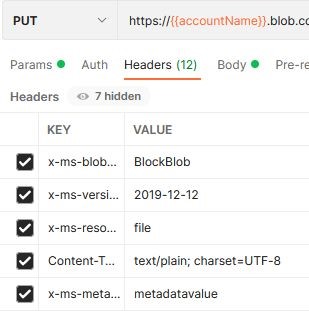
The values I used:
| KEY | VALUE |
|---|---|
| x-ms-blob-type | BlockBlob |
| x-ms-version | 2019-12-12 |
| x-ms-resource-type | file |
| Content-Type | text/plain; charset=UTF-8 |
| x-ms-meta-metadatakey | metadatavalue |
I put some example log data in the body as raw input:
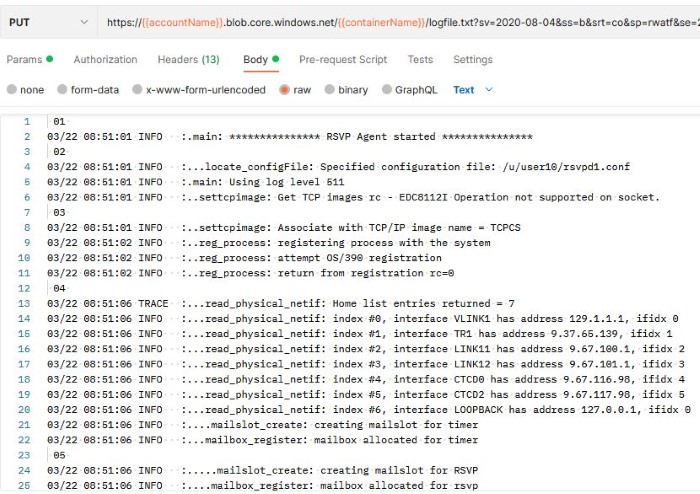
Running the POST command gives us the following result in Postman:
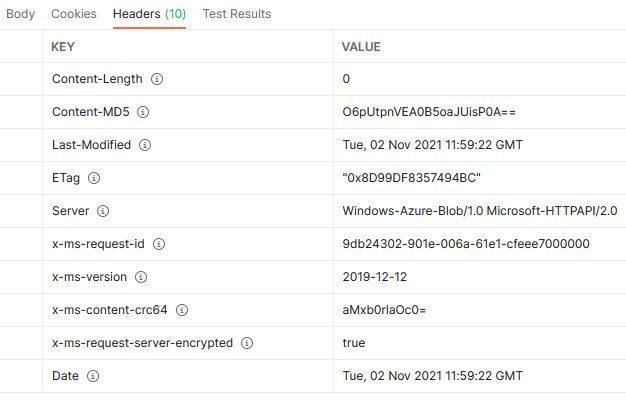
Viewing this file in Azure confirms the POST was successful. Here you can also see the optional header key x-ms-meta-metadatakey with value metadatavalue is set.
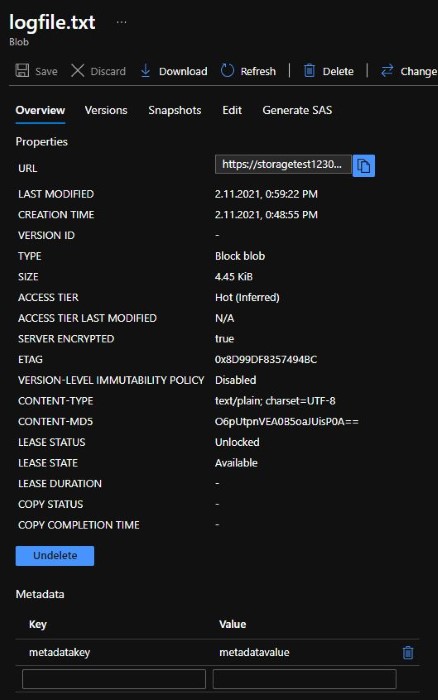
We can also view the file content and see it matches with what we added in the body of the POST command:
